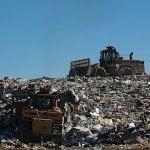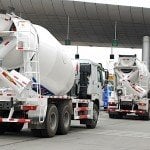On the surface, pun intended, building underwater is “simple.” Engineers erect prefabricated walls or piles and pump water out to create a dry working area within the walls known as a cofferdam.
However, today with more and more underwater construction, on a massive scale, planning and engineering are increasingly challenging. As populations grow, the need for underwater tunnels and harbor improvements make versatile cofferdams essential. With immense water pressure pressing from all sides, the safety and effectiveness of cofferdam technology have been reinvented and innovated to suit increasing demands.

A Brief History of Cofferdams
Cofferdams can be traced back to the Persian Empire and have stood the test of time due to their effectiveness and the lack of alternatives when it comes to underwater construction. The original cofferdams used by Persians were constructed by piling earth around the area to be constructed and bucketing water out to create a dry work area. Even though this process was tedious and risky, it got the job done. The earth walls were removed once the construction was completed.
Cofferdam engineering was advanced further by the Romans, where woodpiles were used instead of earth. The woodpiles were driven into the waterbed to create a wall around the area to be constructed. In the early 1900s, the same technique was adopted and reinvented by German engineers to create the modern steel cofferdams by replacing woodpiles with steel sheets with the first design utilizing interlocking U shaped steep. This innovative cofferdam design is effective in controlling water-flow and is still used by modern underwater engineers to build cofferdams with minor changes in the interlocking design and technology.

Modern Cofferdams
The process of creating cofferdams goes beyond driving steel sheets into the ground to create an enclosure; it requires geotechnical expertise. For one, the structure must provide not only a dry surface for construction but also guarantee the safety of engineers and constructors working inside the cofferdam from collapse. In terms of geotechnical engineering, the steel piles should be driven down deep enough to ensure that water does not seep through but not too deep because it can be difficult to remove once the construction is completed.
The cellular, braced, single-walled, and double-walled are the four types of cofferdams commonly used to create a dry work area for construction. For each type, engineers determine the depth at which the wall should be driven into the ground depending on soil type and water table to ensure that water does not seep up through the ground into the enclosed dry working area. Having a dry work area is particularly important in the construction of support piers for bridges because these structures are built using concrete that requires perfectly dry conditions to cure evenly and thoroughly. Uncured or unevenly-cured concrete piers cannot support immense weight, which increases the risk of collapse. Apart from support piers for bridges, engineers can build cofferdams to act as drydock for large ships that need to be repaired but cannot be lifted out of the water due to size.

Cofferdam safety
In terms of cofferdam safety, engineers calculate the most appropriate height of the piles taking changes in the water levels due to factors such as tides, flood, and so on to keep water out. Erecting a very tall cofferdam wall not only increases instability but will also make it harder for the cranes to offload construction materials from a floating staging site into the cofferdam. The steel sheets are driven into the waterbed to attain the desired depth, height, and shape; then, water is pumped out to create a cofferdam using powerful water pumps. In case the cofferdam begins to flood during construction, a series of primary and backup pumps on standby kicks into overdrive to provide a window for the crew to be evacuated from the cofferdam.
After completion of the project, the walls are pulled out using powerful cranes. The price tag for creating cofferdams is enormous, and they are only used when there are no other viable construction alternatives.

































